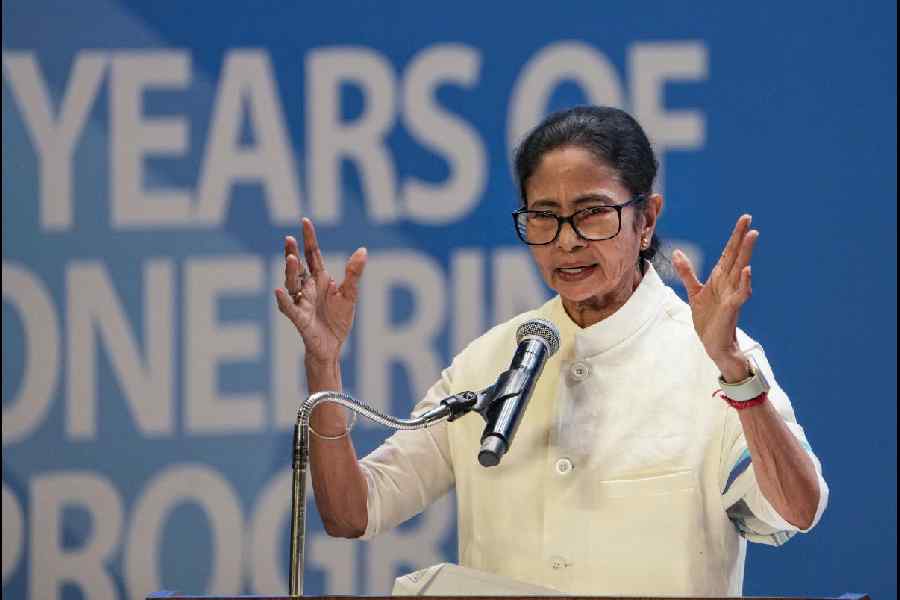Book: The Population Myth: Islam, Family Planning and Politics in India
Author: S.Y. Quraishi
Publisher: HarperCollins
Price: Rs 499
S.Y. Quraishi’s The Population Myth arrives at a time when popular discussions on Hindu-Muslim demographics are hopelessly vitiated by contrived numbers and simplistic readings of purposively chosen ‘facts’. One such fact is that the decadal growth rate of the number of Muslims in India exceeds that of Hindus and, as a result, the share of Muslims in India’s population is rising. This piece of information is used with abandon as a convenient tool to argue that the numerical strength of Muslims is growing fast enough to push Hindus to a minority status in the not-so-distant future. Unfortunately, this assertion deliberately ignores the crucial fact that the growth rate of Muslims has been falling faster than that of Hindus over the past three decades. Besides, the relative growth rates of groups of people can be — and have repeatedly been — shown to be associated with socio-economic factors rather than religious identities. The fact that Muslims in India belong disproportionately to the deprived classes largely explains their relatively higher birth rate. Using half-truths, the charlatans continue to feed the prejudices and distrust that polarize us. In the present climate of hate and bigotry, to debunk myths of this kind with facts, sane voices like Quraishi’s have to struggle hard to be heard. After all, the demonization of groups of people on the basis of their religious affiliation or racial identity has never been based on wisdom.
Some of the analyses in the book, which are based on such widely-used sources of data as the Censuses of India and four rounds of National Family Health Surveys, would sound familiar to demographers and students of development. Yet, they are worth reproducing along with others in a comprehensive manner since the population myths they target for debunking refuse to die. The uniqueness of the book seems to lie in its attempt to combine detailed, community-wise demographic data with precepts of Islamic religious texts to find out if there is any textual support for the popular myth that Islam is against the idea of family planning. The book delves deep into the Quran and the Hadith to demolish this myth. It should not, therefore, surprise anyone that most of the Islamic countries have adopted family planning as an important State policy without facing much opposition from the religious leaders.

The Population Myth: Islam, Family Planning and Politics in India by S.Y. Quraishi, HarperCollins, Rs 499 Amazon
The available data on the prevalence of family planning practices among Muslims in India, on the other hand, do not show a radically different trend from other communities. As a matter of fact, the NFHS not only recorded significant uses of contraception by Muslim couples but they also noted the ‘unmet need’ for family planning among Muslims. As a former bureaucrat with vast experience in government programmes and policies, Quraishi knows it from inside that programmes like Reproductive Child Health services are good in intention but poor in reaching out to those who need them the most. One of the reasons for the perpetuation of the myth that Muslim women are reluctant to access family-planning services lies in the indifference with which most health and family planning workers work in the habitations with large concentration of Muslims. The slightest indication of resistance and refusal — largely driven by prejudice and misinformation — is construed as a concerted stand taken by the whole community and wrongly attributed to the tenets of Islam. The total fertility rate for Muslim women has been falling steadily since 1992-93 (NFHS-1), and the gap between Muslim TFR and Hindu TFR has narrowed down significantly. TFR is the number of children that a woman on an average gives birth to during her reproductive years. While TFR for Hindus declined from 3.3 to 2.1 between 1992-93 and 2015-16, TFR for Muslims declined from 4.4 to 2.6. Interestingly, TFRs for the two communities vary widely across Indian states. The TFRs of Hindus in Bihar and Rajasthan far exceed that of Muslims in Kerala or Tamil Nadu. The one-size-fits-all family planning programmes are rather insensitive to the diversity of preferences for different methods of contraception. Therefore, a programme that relies heavily on one rather than another is rejected by many. For example, where sterilization is unpopular, instead of interpreting it as a general reluctance against family planning, efforts should be made to make other methods accessible. This is true for all communities, not for Muslims alone.
Data and reason are clearly on Quraishi’s side. As a matter of fact, much of what he has written in the book is already well-known among those who want to know. Yet, an uncanny feeling pervades the reader at the end, especially after reading the eighth chapter of the book on “The Politics of Population” that succinctly exposes the bigotry of the proponents of Hindutva who deliberately perpetuate the myth. One only hopes that facts and the interpretation of facts would help mediate the ever-widening divisions. This well-researched book authored by a scholar clearly committed to his cause must be widely read by anyone who wants to find a way through the maze of deliberately constructed falsehood.










